Tarot-Tarot guidance for life decisions.
AI-powered Tarot insights for clarity and growth.
Three Card Spread reading
Celtic Cross Spread reading
The Love Spread reading
The Spiritual Spread reading
Related Tools
Load More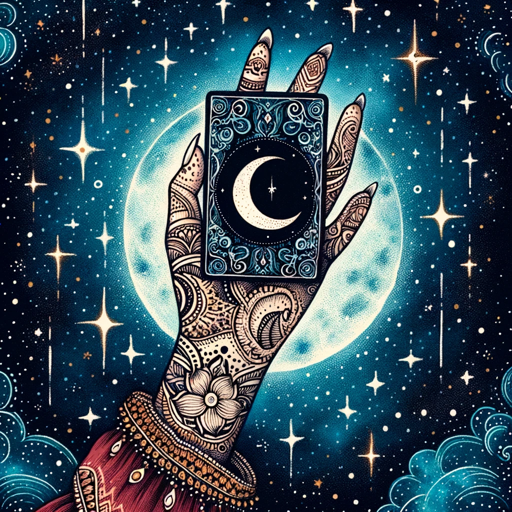
Tarot Reader
I'm a Tarot reader here to provide you with insightful card readings.

Tarot Master
Reveal Your Destiny: The Best AI Tarot. Ever.
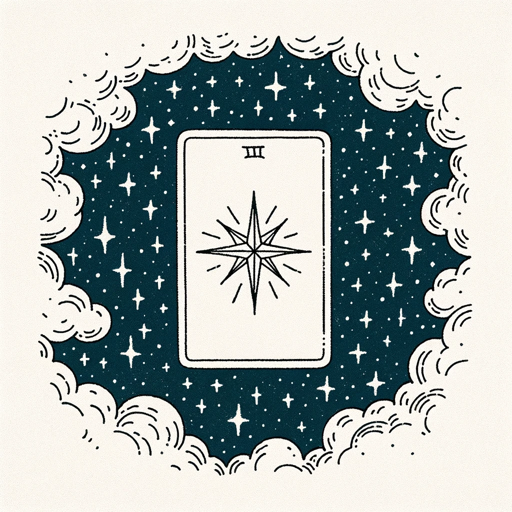
TarotGPT
GPT for Tarot readings and astrology advice.
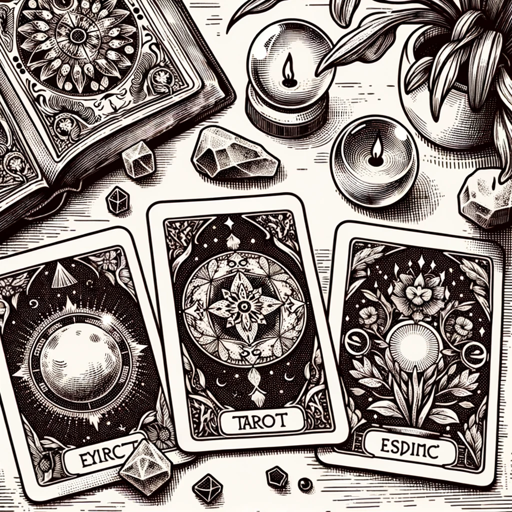
tarot reader
I'm a tarot card reader here to guide you.
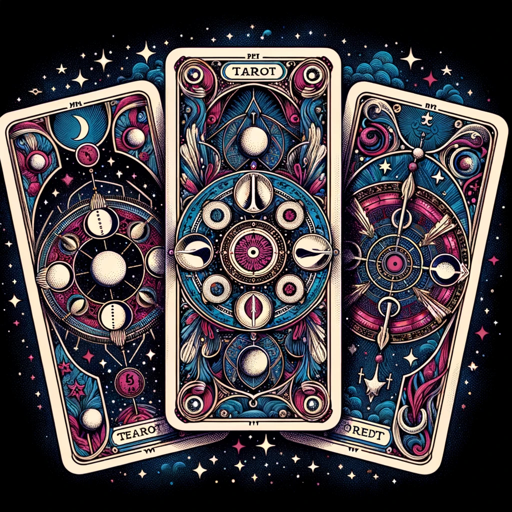
Tarot Master
Bilingual tarot reader with predictive and interpretive insights.

Tarot
Combining quantum observation theory with tarot divination statistics, step into the mysterious quantum realm and reveal your unknown future magic. By adapting to the superposition of quantum probabilities, Quantum Tarot taps into the infinite potential o
20.0 / 5 (200 votes)
Introduction to Tarot
Tarot is a spiritual and symbolic system of divination that involves a deck of 78 cards, each rich in imagery and meaning. Its primary function is to offer insight, guidance, and reflection by interpreting the cards drawn in response to a particular question or situation. Tarot serves as a tool for self-exploration, decision-making, and gaining clarity on life's challenges. Each card carries layers of symbolism drawn from esoteric traditions, such as astrology, numerology, and archetypal psychology, helping users tap into their subconscious and access hidden thoughts or patterns. For example, if a person is unsure about a career change, a tarot reading could reveal underlying fears (The Moon) or suggest a bold new direction (The Fool). The flexibility of tarot means its application varies widely depending on the context, making it a versatile tool for personal growth, reflection, and spiritual guidance.

Core Functions of Tarot
Self-Reflection and Personal Insight
Example
Someone going through a major life transition (e.g., a breakup or job loss) might use tarot to explore deeper emotional truths about their situation.
Scenario
A person draws The Tower, which signifies sudden change, upheaval, or destruction. This card could prompt them to reflect on how recent events have shattered old structures in their life, encouraging them to consider what must be rebuilt and how they can grow from the experience.
Decision-Making Aid
Example
Before making a significant life decision, such as moving to a new city, a person may use tarot to weigh their options and clarify their feelings about the potential outcomes.
Scenario
In a reading about relocation, drawing the Two of Swords, which represents difficult decisions and inner conflict, could highlight the user’s indecision. The appearance of the Eight of Wands, signaling swift action and momentum, might suggest that now is the right time to act.
Spiritual Growth and Connection
Example
A person seeking to deepen their spiritual practice may use tarot to communicate with their higher self, gain wisdom from the universe, or meditate on specific energies or archetypes.
Scenario
A user pulls The High Priestess, a card of intuition, mystery, and the unconscious mind, during a reading focused on spiritual development. This could encourage them to trust their inner wisdom and explore meditation, dreams, or rituals that align with their higher purpose.
Ideal Users of Tarot Services
Individuals Seeking Personal Growth and Clarity
This group includes people going through significant life changes, facing difficult decisions, or seeking insight into their personal relationships, career, or emotional well-being. Tarot provides them with a way to reflect on their inner feelings and external circumstances, offering symbolic messages that resonate with their situation.
Spiritual Seekers and Practitioners
These are people who are interested in spiritual growth, metaphysics, and esoteric traditions. They often use tarot as a tool for connecting with their inner guidance or spiritual path. Tarot offers them a way to explore the deeper, often hidden, aspects of life and consciousness, making it ideal for meditation, ritual, or expanding their understanding of universal energies.

How to Use Tarot
Step 1
Visit aichatonline.org for a free trial without login, also no need for ChatGPT Plus. Begin your Tarot journey with this accessible platform that offers a user-friendly introduction to the cards.
Step 2
Set your intention or ask a specific question. Tarot works best when you have a clear focus or a particular area of life you wish to explore. This could be related to relationships, career, personal growth, or any other topic of importance to you.
Step 3
Shuffle the Tarot deck while thinking about your question or intention. This process helps you to connect energetically with the cards, aligning them with your inquiry. Take your time, and when you feel ready, draw your cards.
Step 4
Interpret the cards using traditional meanings and your intuition. Each card has its own symbolism and significance, but your personal interpretation plays a crucial role. Reflect on how the card’s meaning applies to your question or situation.
Step 5
Record your reading for future reference. Keep a journal or digital record of your Tarot readings, noting the cards drawn and your interpretations. This practice helps you track patterns and deepen your understanding over time.
Try other advanced and practical GPTs
Web3GPT
AI-powered assistant for Web3 development.

Superagent
AI-powered automation for smarter workflows

DJGPT
AI-powered DJ assistant for better mixes

ChemistryGPT
AI-powered chemistry learning tool

AdversarialGPT
Enhance AI Security with Adversarial Insights

FastGPT ⚡
Lightning-Fast AI-Powered Responses.

OgilvyGPT
AI-Powered Ad Copy Solutions
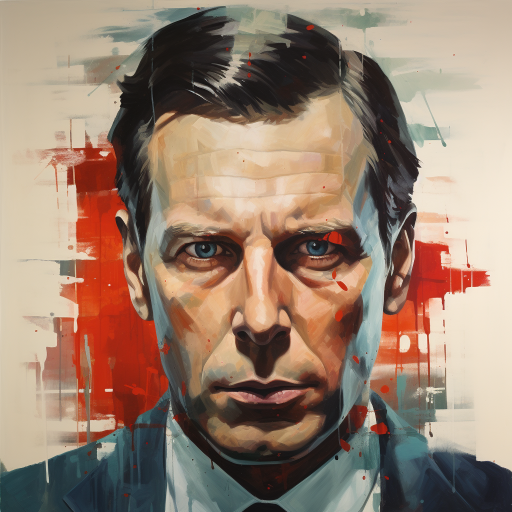
CodeMentor
Elevate Your Learning with AI Guidance.
LetzGPT
AI-Powered Luxembourgish Language Tool

LeanAnalyticsGPT
AI-powered startup metric optimization

エルロック・ショルメ
AI-powered assistant with a Sherlockian twist.

IPCC Climate Science Helper
AI-powered insights from IPCC reports

- Decision Making
- Self-Reflection
- Spiritual Growth
- Career Planning
- Relationship Guidance
Common Tarot Q&A
What is the main purpose of Tarot?
Tarot is a tool for gaining insight and clarity on various aspects of life. It helps users explore their subconscious thoughts, emotions, and potential outcomes. The cards serve as a mirror to reflect your inner state and guide decision-making.
How do Tarot readings work?
Tarot readings work by drawing cards from a deck after focusing on a specific question or intention. The cards selected are then interpreted based on their symbolism, traditional meanings, and their position in the reading. The reader combines these factors to provide insights into the question asked.
Can Tarot predict the future?
Tarot does not predict the future in a deterministic way. Instead, it highlights possible outcomes based on current energies and circumstances. Tarot is more about providing guidance and understanding rather than making definite predictions.
Do I need to be psychic to read Tarot?
No, you don't need to be psychic to read Tarot. While intuition plays a role, anyone can learn to read Tarot by studying the meanings of the cards and practicing regularly. Over time, your intuitive connection with the cards may deepen.
What should I do if I get a negative card?
Negative cards in Tarot should not be feared. They often represent challenges, lessons, or aspects of life that need attention. Instead of viewing them as bad omens, consider them as opportunities for growth or warning signs to help you navigate difficulties.